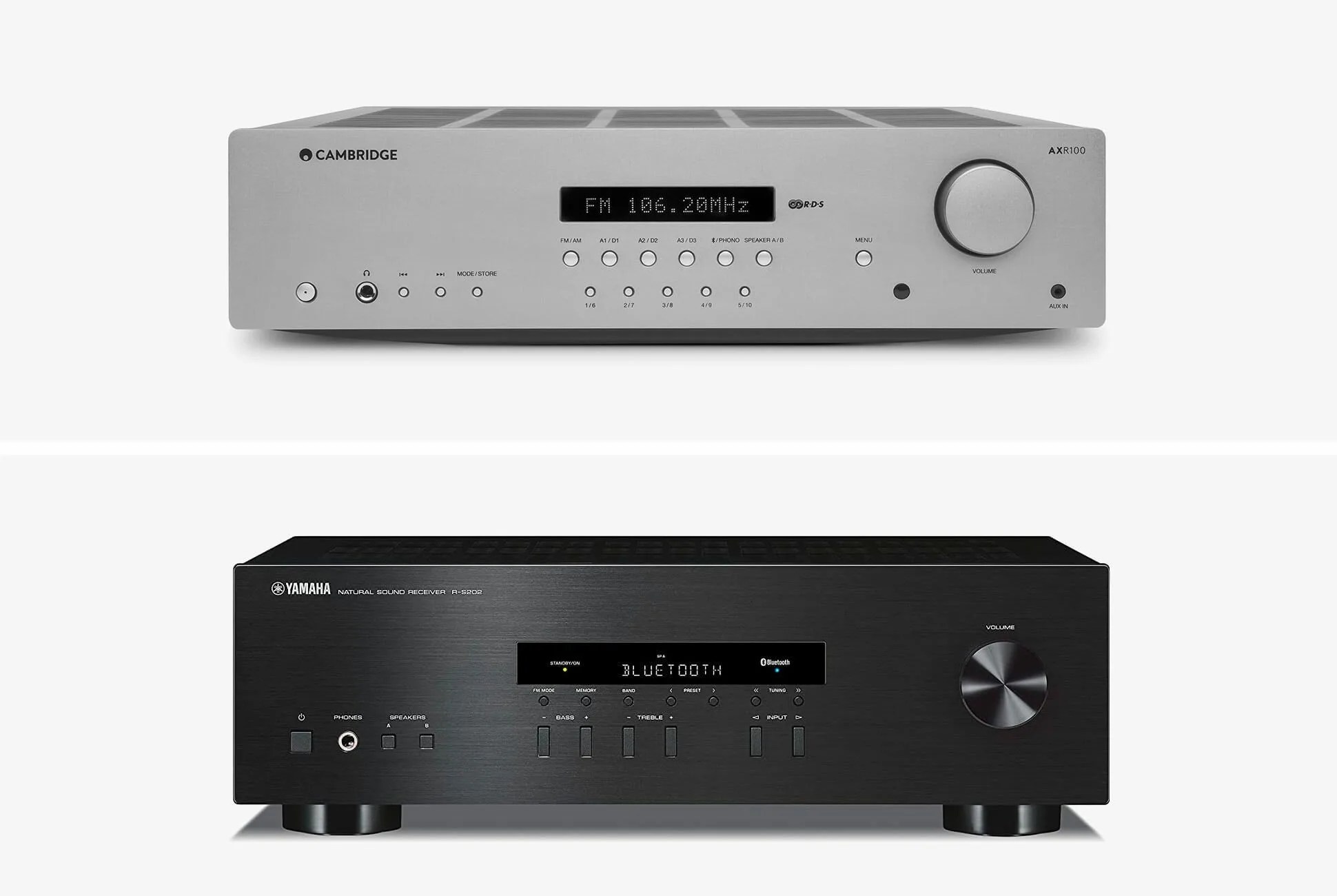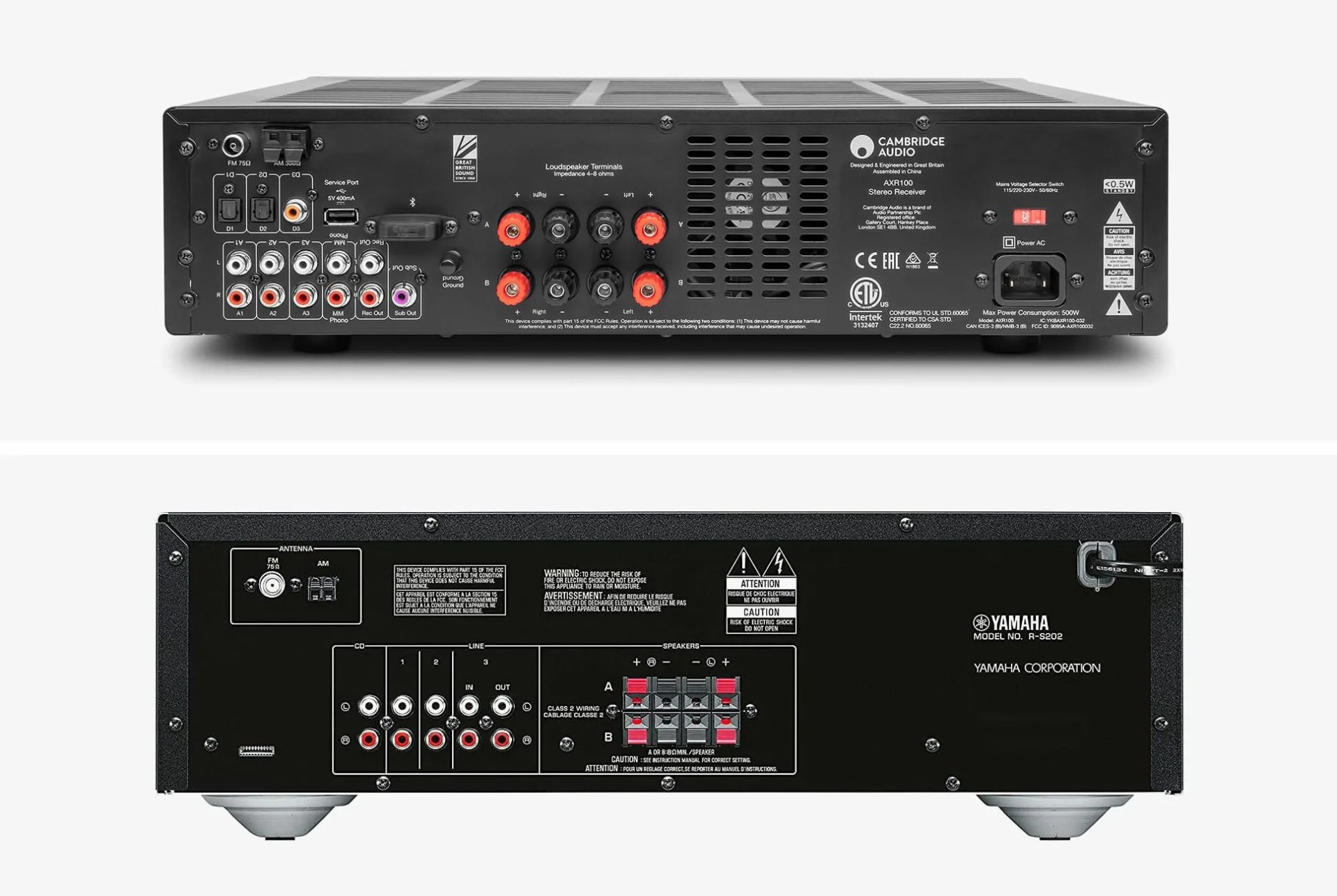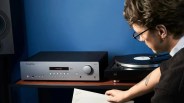A stereo receiver is a simple but very necessary part of any audio system that includes a pair of passive speakers. Less complex than AV receivers (which require a TV in the loop and need to worry about supporting various home theater sound technologies), high quality stereo recievers can come pretty cheap. One of our favorites, the Yamaha R-S202BL, costs right around $150.
But that is just the baseline, and you can go a lot further if you want to splurge. The Cambridge Audio AXR100 is a two-channel stereo receiver that costs $500. And the extremely high-end includes things like the McIntosh MAC7200, which costs $7,500.
So what exactly is the difference between a stereo receiver that costs $150 and one that’s considerably more expensive? Let’s break it down.
A bigger investment means more (and better) amplification.
The speakers are the most important component in any hi-fi system, so you should pick them first. Once you know what kind of speakers you’re going to use, you need to choose an amplifier that is going to properly drive them. In this case, that’s your stereo receiver.
In general, the bigger and better the speakers you have, the more powerful the stereo receiver you’re going to need to drive them. But power isn’t everything. For example, the Yamaha R-S202BL and the more expensive Cambridge Audio AXR100 can both deliver 100-watts per channel, but what makes the Cambridge Audio AXR100 better is the build quality of the built-in amplifiers. Not only are the components higher-grade, but the AXR100 also has both right and left channels, which contributes to more accurate sound.
There’s also the matter of impedance (the amount of resistance in the receiver’s electronic circuits), frequency range (which high and low frequencies it is able to hit) and total harmonic distortion (which how much distortion is added or avoided). Higher-quality amplifiers are going to have a lower impedance, a wider frequency range and the lower the total harmonic distortion. The Cambridge Audio AXR100, for example, has a much wider frequency range with less distortion, which allows it to provide better sound to speakers with the ability to showcase it and ears that are able to appreciate it. The McIntosh MAC7200, meanwhile, offers the same general benefits, but up an additional tier.


